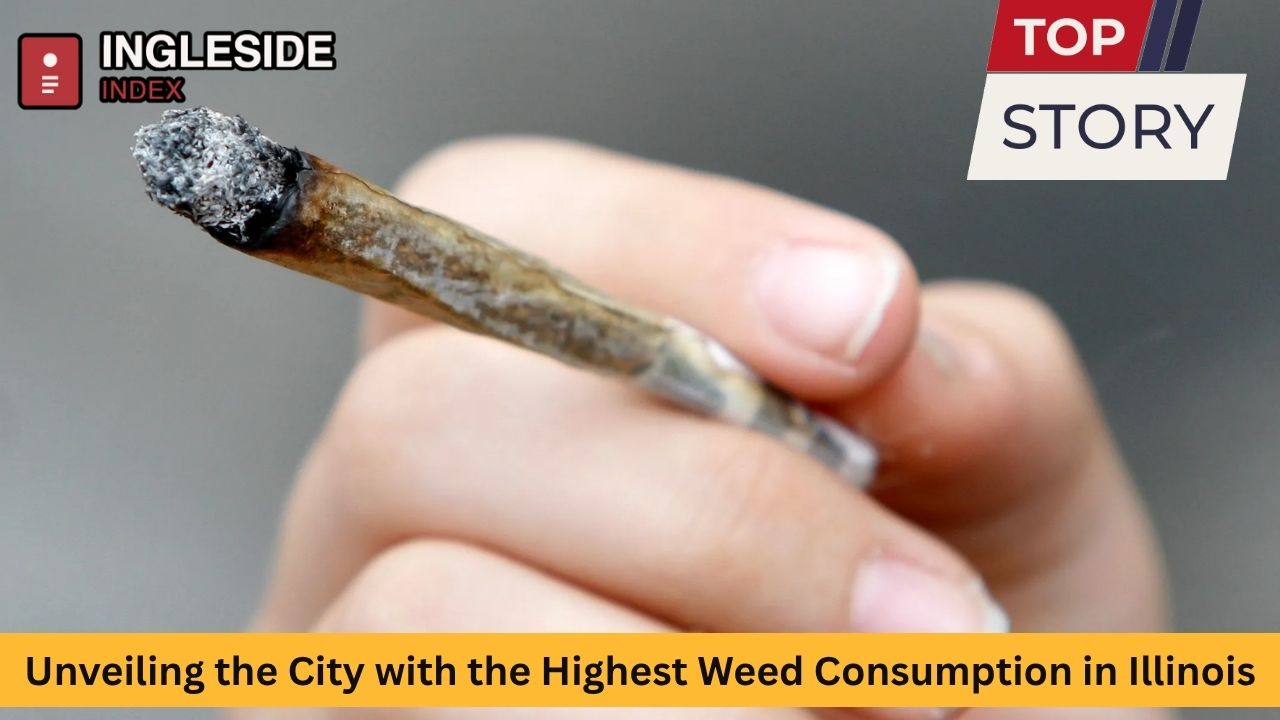The landscape of cannabis consumption in Illinois is nothing short of remarkable. Since the legalization of recreational marijuana in January 2020, Illinois has rapidly ascended the ranks of the nation’s top weed markets, with sales breaking new records every successive year. Much of this explosive growth traces back to its largest and most bustling metropolis, a city whose culture, demographics, and modern attitudes toward cannabis have thrust it into the national spotlight. In this deep dive, we uncover which city in Illinois consumes the most weed, what drives this distinction, and how this consumption impacts the state’s evolving identity.
The Illinois Cannabis Revolution
Illinois made history by becoming the first state in the Midwest to fully legalize recreational marijuana. From Chicago’s urban corridors to the rolling fields of downstate communities, the state’s residents have steadily embraced the new era, not just in terms of consumption but also economic opportunity and social reform.
The rollout of legal cannabis saw Illinois quickly surpass $1.5 billion in adult-use marijuana sales within just two years. Dispensaries now dot the landscape across cities both large and small, but a startling share of transactions, cultural influence, and cannabis consumption is concentrated in a single city.
Painting a Picture: Cannabis Use in Illinois Cities
Illinois is home to several prominent cities—Springfield, Rockford, Aurora, Peoria, Joliet, Naperville, and, of course, Chicago. These urban centers each feature their own unique relationship with the state’s cannabis culture. However, one name towers above the rest in terms of both volume and per capita weed use.
Let’s examine why cannabis consumption is not uniform across Illinois and what differentiates the state’s cities.
Factors Affecting City-Level Cannabis Use
Several elements shape cannabis consumption in a city:
-
Population density
-
Cultural attitudes and history
-
Availability of dispensaries
-
Economic opportunity and local policy
-
Demographics, including age and diversity
Metropolises with younger, more diverse populations and a strong culture of nightlife and entertainment tend to foster higher weed use. Accessibility matters too—cities with more dispensaries make it easier for residents and visitors to purchase products legally.
Chicago: The Epicenter of Illinois Cannabis
When it comes to weed consumption, Chicago reigns supreme. The Windy City isn’t just the largest city in Illinois—it’s a national trendsetter in marijuana culture, commerce, and consumption.
Weed by the Numbers: Chicago Leads the State
In recent years, Chicago has topped every Illinois metric on legal marijuana:
-
Highest total cannabis sales by city
-
More dispensaries than any other Illinois city
-
Significant marijuana tax revenue contributing to city budgets
The scale is staggering. Chicago alone accounted for millions in tax revenue from cannabis, outstripping other cities by wide margins. From its trendy neighborhoods to historic districts, dispensaries in areas like River North, West Loop, and Lakeview are frequented by locals and tourists alike.
Why Chicago Rises Above
Population: Chicago is the third-largest city in the United States, with a population exceeding 2.6 million. This concentration not only means more potential buyers, but also a rich tapestry of subcultures and attitudes that openly embrace cannabis.
Culture: Chicago’s world-renowned music festivals, from Lollapalooza to Pitchfork, have been major catalysts for cannabis sales, pushing dispensaries into overdrive during high-traffic events.
Diversity and Youth: A significant segment of Chicago’s population is aged between 18-35—a demographic known for higher cannabis use rates.
Tourism: As a top U.S. tourist destination, Chicago attracts millions of out-of-state visitors, many of whom are eager to partake in legal cannabis.
Comparing Other Illinois Cities
While Chicago dominates weed consumption, other cities have also seen steady growth—albeit at a lower scale.
-
Aurora and Naperville: Both have robust medical marijuana programs and a growing number of adult-use dispensaries, but their overall sales pale compared to Chicago’s numbers.
-
Peoria, Springfield, and Rockford: These cities have welcomed legal weed but deal with more conservative social attitudes and fewer licensed dispensaries, resulting in lower overall consumption.
-
Champaign-Urbana: As a major college town, this area has a notably higher per capita use than most downstate communities, especially during university events and local music festivals.
The Stats: Cannabis Sales and Consumption
Illinois has reported record-breaking cannabis sales year after year, with both recreational and medical markets contributing. However, Chicago consistently leads not just in total sales but also in per capita rates among major cities.
-
Chicago saw annual cannabis tax revenues of over $4 million, a number none of the other Illinois cities could match.
-
Cannabis sales soared past $1.6 billion statewide in the most recent fiscal year, with Chicago dispensaries alone accounting for a considerable share.
-
Dispensary density is highest in Chicago, especially in neighborhoods near downtown and along public transit corridors.
-
During citywide events like Lollapalooza, Chicago dispensaries have reported 50% surges in sales over event weekends.
Additionally, research shows that cannabis usage rates among Chicago’s youth and adults are above the state average. Some neighborhoods, particularly on the north side (such as Wicker Park, Lakeview, and Lincoln Park) and the near-west side, report some of the highest cannabis use rates in the state.
The Impact of Legalization
Legal cannabis in Illinois was about much more than just giving residents the freedom to consume marijuana. It shifted billions of dollars from the illicit market to legitimate state revenue, and set the stage for significant social equity initiatives.
Chicago has been at the heart of these shifts:
-
Hundreds of new jobs have been created, from dispensary staff to delivery drivers and security personnel.
-
Tax revenue has been redirected toward community reinvestment, especially in neighborhoods most affected by the war on drugs.
-
Entrepreneurship has blossomed, especially with the state’s social equity program encouraging minority and women ownership in the cannabis industry.
Social Divides and Legal Cannabis
Despite progress, cannabis consumption—and policy—has exposed sharp divides.
-
Marijuana remains expensive in Chicago and across Illinois, with legal weed reportedly costing nearly 90% more than in comparable states. This cost factor sometimes pushes consumers into neighboring states like Michigan for less expensive alternatives.
-
Access to dispensaries, while generally highest in Chicago, is still unequally distributed. Deep South Side and some West Side neighborhoods are under-served compared to northern areas.
-
Social stigma remains in some neighborhoods and among certain demographics, which can repress reported consumption rates.
Neighborhood Highlights: Chicago’s Cannabis Hotspots
While Chicago as a whole leads the state, certain neighborhoods stand out for their cannabis consumption:
-
River North and West Loop: These areas, flush with tourists, nightlife, and young professionals, feature some of the city’s busiest dispensaries.
-
Lakeview, Wicker Park, Logan Square: Trendy neighborhoods with high concentrations of young residents and a rich culture of music venues, bars, and art spaces—a natural environment for elevated cannabis use.
-
Downtown and South Loop: Proximity to many hotels, cultural attractions, and transportation hubs sees large numbers of both locals and out-of-towners purchasing cannabis.
Dispensaries in these neighborhoods routinely report higher sales compared to those in more residential districts. Accessibility, walkability, and the density of late-night venues all contribute to higher rates of weed use.
Cannabis and Chicago’s Changing Identity
The surge in cannabis consumption has become an integral aspect of Chicago’s reshaping identity. The normalization and celebration of marijuana—through media, business, and public events—has shifted perceptions at every level.
-
Mainstreaming: Cannabis products are sold not just as something to smoke, but in forms ranging from gourmet edibles to bath bombs and luxury lotions. This mainstreaming is visible in Chicago’s boutique dispensaries and lifestyle brands.
-
Cultural events: Legal cannabis is an open part of major gatherings, from pride parades to art festivals. Consumption lounges and events create a welcoming atmosphere for users from all walks of life.
-
Public health and responsibility: Chicago invests heavily in public health messaging around safe and responsible use and in preventing underage cannabis consumption. Even in neighborhoods with high usage rates, efforts focus on harm reduction and education.
Data-Driven Trends: Who Is Consuming?
Demographic data shows that:
-
Young adults aged 18-25 represent the largest group of regular cannabis users in Chicago.
-
Past-year usage rates in Chicago often outpace state averages, with significant percentages of residents reporting some form of cannabis consumption.
-
Usage is generally higher in neighborhoods close to universities or entertainment centers.
-
Cannabis use is notably higher among non-Hispanic Black residents of Chicago, closely followed by white and Hispanic residents.
Economic Impact
Dispensaries across Chicago aren’t just retail points—they are community economic engines.
-
Job creation: Hundreds of jobs have emerged in staffing, security, management, and logistics.
-
Commercial real estate: Properties previously vacant or underused are now bustling dispensary storefronts and grow facilities.
-
Tax windfalls: Local and state budgets benefit—enabling investments in infrastructure, public health, and reparative social programs for communities harmed by historical cannabis enforcement.
The Social Scene: Cannabis as Community
Legal weed has woven itself into the social fabric of Chicago. Beyond unofficial smoke sessions, the city boasts consumption lounges, pop-up supper clubs featuring cannabis-infused cuisine, educational workshops, and music festivals that elevate cannabis to mainstream status.
Social equity remains a focus, as Chicago leaders and activists push for fair licensing practices and investments in neighborhoods historically targeted by drug enforcement. This ongoing evolution keeps the city at the forefront of cannabis culture, not just in numbers but in cultural depth.
Challenges on the Horizon
Despite Chicago’s dominance in weed consumption, several hurdles remain:
-
Pricing: High legal prices continue to drive some consumers to the illicit market or to neighboring states.
-
Regulatory complexity: Licensing processes can be slow and costly, deterring some would-be entrepreneurs.
-
Neighborhood equity: Disparities persist in where dispensaries are placed and who owns them.
-
Law enforcement: While attitudes have relaxed, confusion over consumption rules in public vs. private spaces occasionally leads to legal gray areas.
Looking Forward: Chicago and Illinois Cannabis
With each passing year, Chicago cements its place as a national hub of cannabis culture—all while driving innovation in retail, public health, and social justice. The lessons learned here are shaping policies across Illinois and offering a blueprint for cities in other states.
Looking ahead, efforts are underway to:
-
Expand consumption lounges where people can gather safely and enjoy cannabis in a social setting.
-
Streamline licensing to enable more entrepreneurs from diverse backgrounds to open dispensaries.
-
Lower costs through regulatory reform and increased competition.
-
Maintain a robust focus on youth prevention and community investment through targeted use of tax revenue.
Conclusion
The story of cannabis in Illinois is, at its heart, the story of Chicago’s dynamic, resilient, and evolving identity. As the city with the highest weed consumption in the state by far, Chicago not only leads in sheer numbers but in the ongoing cultural conversation around marijuana. From record-setting dispensary sales to vibrant community events and headline-grabbing public festivals, Chicago’s relationship with cannabis continues to inspire change—making the Windy City, quite fittingly, the city with the highest weed consumption in Illinois.
From the neon-lit windows of River North dispensaries to neighborhood lounges and music festival grounds, Chicago shows no signs of slowing down in its passion for weed. The evolution is far from over—with every year, new milestones, trends, and challenges arise, keeping Chicago at the vanguard of the Illinois cannabis scene.




